- Administrator
- Albums and Singles
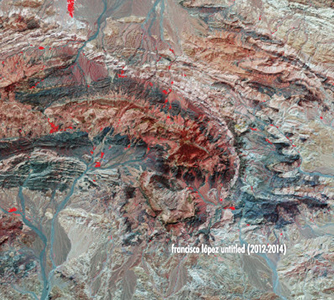 These two new releases from the legendary composer may have come out around the same time, but they both represent extreme ends of his work. The former is a two disc, 16 piece compilation of shorter works created over the span of two years, covering a wide gamut of the López sound. The latter is a flash drive containing a single work (split into 11 distinct parts) five hours and 20 minutes in length, all based on a single sound source. They may be distinctly different in composition and construction, but both are brilliant works in his already shining discography.
These two new releases from the legendary composer may have come out around the same time, but they both represent extreme ends of his work. The former is a two disc, 16 piece compilation of shorter works created over the span of two years, covering a wide gamut of the López sound. The latter is a flash drive containing a single work (split into 11 distinct parts) five hours and 20 minutes in length, all based on a single sound source. They may be distinctly different in composition and construction, but both are brilliant works in his already shining discography.
Untitled (2012-2014) is the more accessible of the two, or at least as much as that term can be applied to Francisco López’s often difficult work.Consisting of 16 pieces ranging from just shy of three minutes to a bit under 14, it functions well as a compilation or overview of the work he has been doing in that time span.One thing that does define these works (and seeps into Untitled #352 as well) is an intensive use of low frequencies.Listening on headphones (as recommended) results in some moments of near silent volume, but significant vibrations and rumbling.
One of the major reasons for the diversity of these two CDs is the differing sources of sound López utilized to create them.Four of the pieces stem from raw sound material provided by other artists that he radically reworked into his own compositions."Untitled #316 (for Zbigniew Karkowski)" uses material from the late composer (and friend of López) to create an expanse of low frequency that, without adequate headphones or speakers, would probably sound like complete silence.With the addition of shrill digital static, the piece builds to a harsh roar before falling back to the open space.At times I could not tell if what I was hearing was actually on the recording or sound of my headphones barely being able to handle the low end noise.
In a similar vein, "Untitled #297", using source sounds from the artist Shhh… is another pastiche of extreme frequencies.It functions almost as a study of significant contrasts, where foundation shaking low frequencies are paired with almost ultrasonically high register noises verging on the upper limit of human hearing.In truth, it is not too dissimilar to the approach of some of the earliest Whitehouse recordings, but here executed with a scientific, almost clinical precision.
Most of the remaining pieces are works derived from field recordings, although in a less obvious manner than Lopez has presented on his Epoché series of recordings in recent years.Here is where a significant amount of variation can be heard."Untitled #293", created from recordings made in Lima and Panama City, leads off with an almost startling lack of bass, but instead glistening, shimmering shards of noise.The volume rises and falls, and sounds almost resembling horns and pseudo-rhythmic segments appear, before the piece ends on a foundation rattling note.
There are also pieces included with less clear sources, but are no less engaging.Voices appear at erratic times throughout "Untitled #296", augmented by swirling tones and understated electronics.There is a notable amount of activity to be heard, though where it is coming from is anything but clear, ending with what sounds like a sharp spring reverb passage."Untitled #304" is at first what I would consider a "standard" López composition:a droning, almost air conditioner like din sets the mood as quiet electronic-tinged noises cut through.Later, however, and almost drum-like thump is introduced that gives an entirely different feel to the piece.
samples:
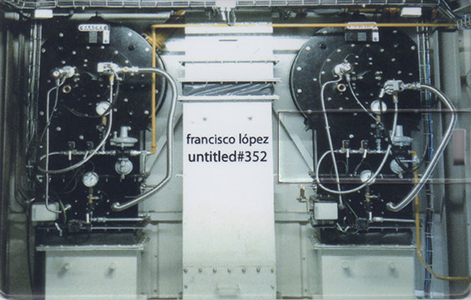
On the other hand is Untitled #352, a massive, monolithic work created from a single source:field recordings from an urban boiler plant facility at the Régie de Chauffage Urbain, near Paris.The final 20 minute segment of the five hour and 20 minute piece, the soundtrack to Exposure (a choreographic project by Anne Collod) is a mixdown of an originally 46 channel piece based on these recordings.The composition is an extremely dynamic one, blending rhythmic puffs of white noise and intersecting layers of varying recordings, piled together then stripped back and back again.At times the sound is an overwhelming combination of nearly every frequency in the sonic spectrum, and then others it is only the subtlest of pops and crackles.
The five hours that precede this is a series of ten 30 minute pieces, titled "MANTRAck" 01 through 10.The nature of these recordings is all in the title:each is a rework of the same source material, in long form structures with little overt variation.In that regard, they are excellent meditative pieces, having the "zone out" quality of white noise, but with enough change and variation within the pieces to keep them engaging.Most of the variation has to do with the frequencies:some cover more of the full frequency spectrum, such as the first.The opener is an abrasive, dissonant buzz that builds to an unmoving wall, while the quieter, more bassy foundation evolves and changes.
For the sixth piece, he emphasizes the mid and high end frequencies, resulting in a metallically shrill, almost painful bit of sound.On the third segment Lopez keeps the harsher moments at bay and instead emphasizes the more textural elements of the source recordings.This results in a more varied piece, where pops, clicks, and the occasional bit of (intentional) digital clipping result in a greater depth and variety.The final tenth segment is another pairing of extreme frequencies, but engineered in such a way as to be peaceful, rather than abrasive.
The two disc compilation Untitled (2012-2014) is the more inviting of these two works given its wider array of source material, but the magnitude and depth of Untitled #352 makes for a more challenging, yet overall more rewarding experience.To sound a bit cliché, the compilation is well suited for the casual listener or unfamiliar person interested in Francisco López’s daunting body of work, but can easily be appreciated by those who have followed him for awhile.Untitled #352 is likely going to be a bit off-putting for the uninitiated due to its intentionally static structure and sprawling duration, but fans will find much to appreciate.
samples:
 
Read More
- Administrator
- Albums and Singles
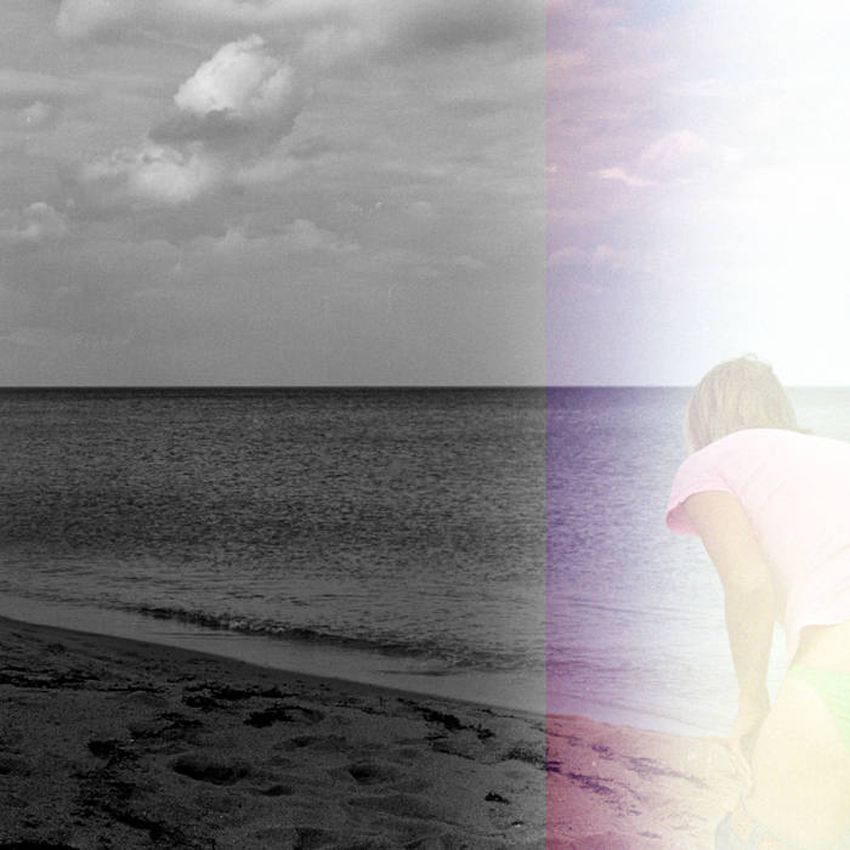 Drøne's second album was bizarrely released as a part of Record Store Day, which was quite an unexpected strategy given that few record stores are clamoring to stock new sound collage albums from Swedish record labels.  As a result, I was kind of expecting A Perfect Blind to be some sort of collectible minor release with eye-catchingly ambitious packaging and swirled gold-flecked vinyl or something.  Instead, it is just another excellent album, though Mark van Hoen and Mike Harding do enlist a murderers' row of talented collaborators including Philip Jeck and Anna von Hausswolff to help realize their expanded vision.  In fact, this album marks quite an impressive and unexpected evolution from the duo’s 2016 debut, using Reversing Into Future's beguiling miasma of shortwave radio transmissions, cryptic snatches of dialog, and droning synths as a foundation for something a bit more substantial and melodic.
Drøne's second album was bizarrely released as a part of Record Store Day, which was quite an unexpected strategy given that few record stores are clamoring to stock new sound collage albums from Swedish record labels.  As a result, I was kind of expecting A Perfect Blind to be some sort of collectible minor release with eye-catchingly ambitious packaging and swirled gold-flecked vinyl or something.  Instead, it is just another excellent album, though Mark van Hoen and Mike Harding do enlist a murderers' row of talented collaborators including Philip Jeck and Anna von Hausswolff to help realize their expanded vision.  In fact, this album marks quite an impressive and unexpected evolution from the duo’s 2016 debut, using Reversing Into Future's beguiling miasma of shortwave radio transmissions, cryptic snatches of dialog, and droning synths as a foundation for something a bit more substantial and melodic.
The first half of the opening "Back to Station" deceptively feels like a perfectly linear continuation of Drøne’s Reversing Into The Future aesthetic, as a looping synth drone coheres into an insistent pulse that quickly swells with dense layers of field recordings.  The field recordings sound a hell of a lot like a wave machine at a water theme park, as the insistent sloshing locks into the same pulse as Van Hoen's synth.  That touch lends the piece quite a visceral heft, as if the ocean itself wanted a hand in this project.  The duo soon build upon that heavy momentum with a hollow and whooshing onslaught of electronics and unrecognizable field recordings, though a recurring annoying buzz keeps things enticing strange: there is never any real hint as to which of the various divergent threads may ultimately take control of the piece.  As it turns out, none of them do, as the piece's rolling elemental force unexpectedly dissipates in favor of a bleary reverie of melancholy cellos and violas mingled with scraping and rattling metal strings.  At first, the interlude languorously drifts along in a subtly dissonant and impressionist haze, but it slowly and sneakily blossoms into a mournful descending melody that recalls the central theme of Arvo Pärt's "Cantus In Memory of Benjamin Britten."  Needless to say, it achieves an impressive degree of elegiac beauty, but I found myself far more fascinated with all of the buried and cryptic sounds bleeding into the periphery.  While Drøne are not likely to surpass Pärt's genius as a composer anytime soon, they unquestionably excel at surrounding their stabs at melody with a mesmerizing atmosphere of feverish unreality.
The album's second half is devoted to yet another side-long epic in the form of "Cutting the Screen."  Opening with a heavy thrum of slowly quavering synth and deep rumble, it gradually swells into a menacing swirl of blurry, uncomfortable harmonies and desolate industrial textures.  Though it sustains that dark atmosphere for a while, there are plenty of subtly executed small changes that cumulatively build towards a throbbing interlude of deep burbling undercurrents, buried voices, and tensely quivering strings.  That new motif is allowed is linger and accumulate tension for a while before it is ultimately engulfed in the slowly swelling roar of a new undercurrent.  Curiously, however, that roar acts as a reset button rather than the foundation of a new chapter, as everything abruptly falls away to leave only a floating and dreamlike stasis and the muted indecipherable chatter of a distant television.  It feels like an appropriate end to the album, but Harding and Van Hoen have one last trick up their sleeves, unexpectedly closing the piece with an atypically simple and conventionally pretty coda of lush strings and church organ.
If A Perfect Blind has a flaw, it is only that it feels like a collage of unrelated improvisation sessions artfully bleeding into one another.  In a way, that approach is also one of the duo's greatest strengths, as the trajectory of each piece follows a wonderfully unpredictable dream-logic.  The downside is that the pacing is sometimes puzzling and both pieces seem to ultimately follow a very similar trajectory: a hallucinatory flow of burbling, multilayered abstraction gives way to a final structured and melodic set piece (the proverbial rabbit being pulled out of the hat).  That transition would be a bit stronger if it were more seamless and less blunt, as the sharp focus of the structured, melodic passages somewhat undercut the duo's genius for murky obfuscation.  Unveiling a pay-off at the end of each piece is nice, I suppose, but it is not where Harding and Van Hoen truly shine.  Thankfully, they excel in quite a few other realms with this record (mood, vision, inventive sound sources, etc.).  Drøne's greatest accomplishment lies in their production talents, however, as A Perfect Blind is an immersive feast of rich textures and dynamic shifts in density.  While the duo have taken a bold step towards more ambitious composition and orchestration, this album is wonderful primarily because it successfully replicates the simmering and churning fever-dream alchemy of its predecessor.
 
Read More
- Administrator
- Albums and Singles
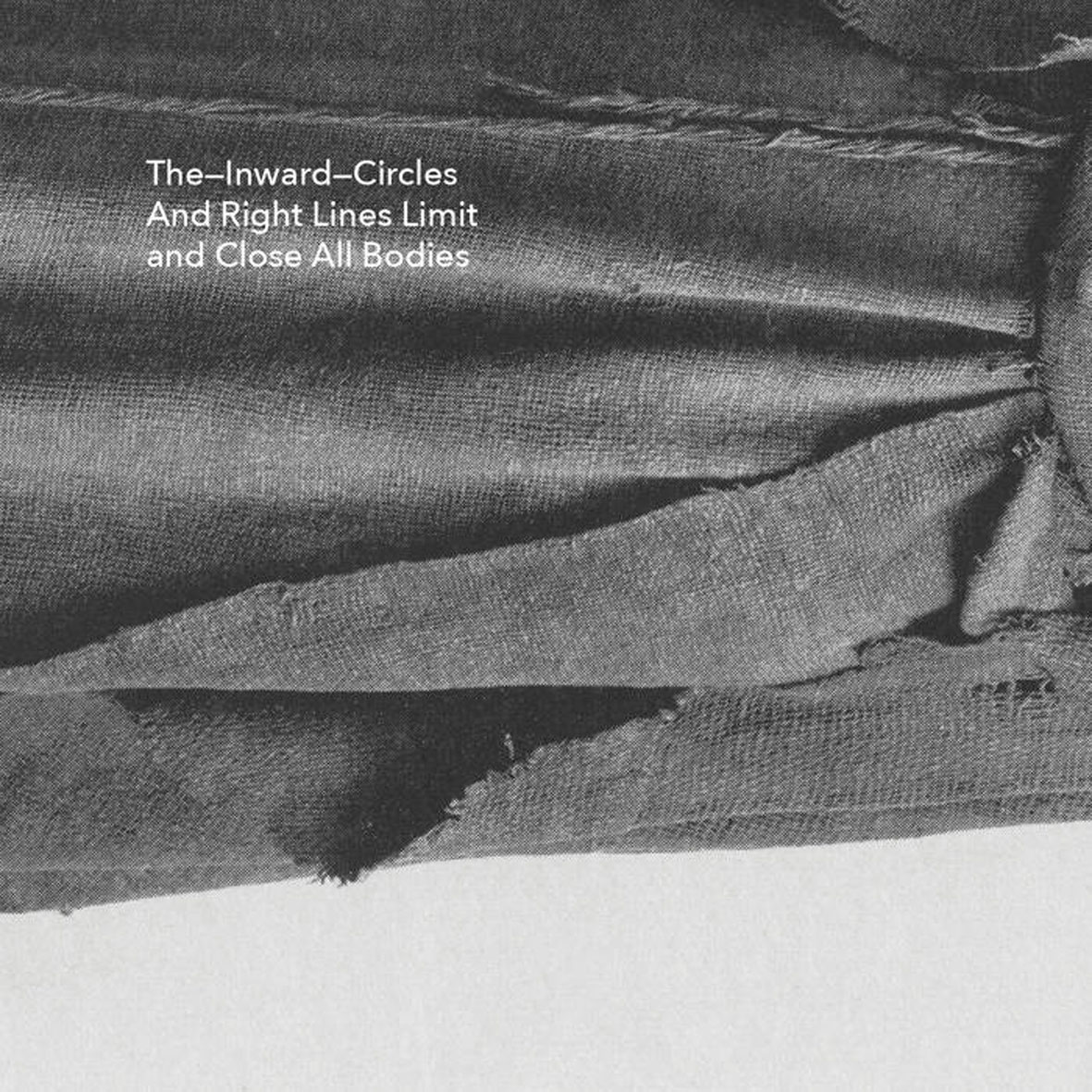 As a longtime Richard Skelton fan, I have been watching his recent trajectory with quite a bit of fascination, as he has been restlessly diving into increasingly varied and arcane territory while distancing himself further and further from his brilliant earlier work with each new release.  While there are still some lingering vestiges of that vibrantly harmonic-strewn string work in his *AR project with Autumn Richardson, Skelton's solo work as The Inward Circles is explicitly (and increasingly) intent on exploring an aesthetic of "burial, obfuscation and mythologization."  In fact, The Inward Circles often seems like a rather perverse name, as Skelton has seemingly ceased burrowing inwards and thrown himself into the epic, timeless, and vast. At times, that newly cosmic scope falls uncomfortably close to dark ambient (a genre that I am generally quite happy to avoid), but it can sometimes yield absolutely crushing and awe-inspiring results as well (Nimrod is Lost).  This latest opus does not quite sustain the lofty heights of some previous Inward Circles classics, but it compensates with a slow-burning majesty that builds to a sustained and wonderful crescendo.
As a longtime Richard Skelton fan, I have been watching his recent trajectory with quite a bit of fascination, as he has been restlessly diving into increasingly varied and arcane territory while distancing himself further and further from his brilliant earlier work with each new release.  While there are still some lingering vestiges of that vibrantly harmonic-strewn string work in his *AR project with Autumn Richardson, Skelton's solo work as The Inward Circles is explicitly (and increasingly) intent on exploring an aesthetic of "burial, obfuscation and mythologization."  In fact, The Inward Circles often seems like a rather perverse name, as Skelton has seemingly ceased burrowing inwards and thrown himself into the epic, timeless, and vast. At times, that newly cosmic scope falls uncomfortably close to dark ambient (a genre that I am generally quite happy to avoid), but it can sometimes yield absolutely crushing and awe-inspiring results as well (Nimrod is Lost).  This latest opus does not quite sustain the lofty heights of some previous Inward Circles classics, but it compensates with a slow-burning majesty that builds to a sustained and wonderful crescendo.
Unusually, this particular album does not seem focused upon a particular theme, though its digital-only sister release Scaleby centers around the discovery of a deerskin-clad "Ancient Briton" in the peat moorland of Northern England (a truly Skelton-esque inspiration indeed).  For Right Lines, however, there is just a cryptic scattering of Nathaniel Tarn and Sir Thomas Browne lines that may very well be clues to nowhere.  There is an unintentional theme to the album, however: it sounds better and better the louder I play it.  The reasoning for that is quite simple, as its charms are generally not melodic ones.  Rather, Right Lines seems to traffic in something approximating vast cosmic horror and existential dread, as early pieces like "The Soul Subsisting" are all about ominous, cavernous swells and gloomy, menacing harmonies…at least at first glance.  At more extreme volumes, the textural richness begins to come out, as does the sharpness of some of the individual notes.  Experienced in that engulfing and visceral way, the album's seemingly weaker moments become kind of a crunching, grinding, and nerve-jangling nightmare.  I have no idea if that was Skelton's intention, but the immensity of his scale is scary regardless, as no one likes being confronted with their insignificance in the face of infinity or geological time.  It may not necessarily be the sort of fare that I look to Richard Skelton for, but it diverges enough from artists like Lustmord to be relatively compelling.
Things start to get more inventive and lively with the album's third piece, however, as "In An Hydropicall Body" is a shifting and oscillating cloud of feedback swells that would make Kevin Drumm proud.  It even sounds like there is a processed high-hat or maraca in there at one point, conjuring up the surprising illusion that I am hearing an actual band of amplifier worshippers.  Again, that is not traditionally Skelton-esque fare at all, but it is an intriguing experiment and it leads nicely into the trilogy of excellent pieces that comprises the real meat of the album.
The first is a brief exile from the Scaleby variations, "Scaleby, X," a simple and perfect blur of woozily looping and quavering drones.  The following "Nitre of the Earth" initially seems to reprise the brooding ambient gloom of the album's earlier pieces, but it eventually blossoms into something more complex and gripping when a sharp and pulsing harmonic motif tears through the haze to give the piece some genuine bite and a wonderfully ugly cloud of dissonant harmonies.  "Necks Was A Proper Figure" rounds out that hot streak with an aesthetic somewhere between "Scaleby" and "Nitre," unveiling a muted and forlorn melodic loop that is disrupted by eerie swells and something that resembles a shuddering and garbled deep space transmission.  As it progresses and obsessively repeats, it gradually snowballs in gnarled ferocity until it becomes quite a dense and vibrant howl of harsh textures and uncomfortable harmonies.  Skelton could have safely stopped the album right there, but he opts to include one more substantial piece in the harrowing sustained roar "If The Nearness of Our Last," which sounds like an dissonant mass of harmonically clashing choral samples over a layer of phase-shifting grinding.  It is certainly heavy, but a bit limited.
The album draws to an unexpectedly quiet close with the muted "Scaleby, XI," which feels a lot like a submerged version of its predecessor.  It is a solid (if unexceptional) end to a solid (and occasionally great) album.  Trying to maintain some semblance of objectivity when I am passionate about an artist is always hard, as I am unavoidably in the thrall of preconceived expectations and want every album to be better than the last.  Richard Skelton, on the other hand, has completely different priorities than I do: namely, 1.) not repeating himself, and 2.) absorbing an eclectic array of new and often non-musical influences into his artistic vision.  On those grounds, Right Lines is a very successful album, albeit one with a few weaknesses (an occasional over-reliance on the power of amorphous cinematic brooding, a few comparatively less inspired pieces, and a weaker thematic focus than usual).  Those grievances are mostly eclipsed by the awe-inspiring elemental force Skelton unleashes when he hits the mark though.  Also, a few pieces, such as "Nitre of the Earth" and "Necks Was A Proper Figure" easily stand with some of Skelton's finest work.  As "Scaleby, X" and "In A Hydrologicall Body" are not far behind, it feels apt to view Right Lines as a stellar EP that has been padded out with a few experiments that do not quite fully connect...or perhaps an extremely promising transitional album.  Either way, there is a lot to love here, even if it does not quite add up to a fresh masterpiece.
 
Read More
- Administrator
- Albums and Singles
 Luke Younger’s latest EP draws inspiration from his fascination with the UK's media chaos surrounding last year’s Brexit vote.  I suppose that is arguably one good thing to come out of that dark bit of recent history, but Helm already seemed to be doing a perfectly fine job producing fine albums without that unfortunate muse.  Inspirations aside, Helm EPs generally tend to feel a hell of a lot like maxi-singles and they only surface when Younger has made a significant creative breakthrough.  World in Action is no exception to that trend.  In this case, that breakthrough takes the form of the 9-minute "Blue Scene," a gloriously skittering and jazz-damaged cacophony that often resembles a hallucinatory flock of worried geese...with a groove.  Naturally, the remaining three pieces adhere to characteristically Helm-esque levels of quality, but it is quite clear that the wildly skwonking, must-hear tour de force of "Blue Scene" is the reason that this release exists.
Luke Younger’s latest EP draws inspiration from his fascination with the UK's media chaos surrounding last year’s Brexit vote.  I suppose that is arguably one good thing to come out of that dark bit of recent history, but Helm already seemed to be doing a perfectly fine job producing fine albums without that unfortunate muse.  Inspirations aside, Helm EPs generally tend to feel a hell of a lot like maxi-singles and they only surface when Younger has made a significant creative breakthrough.  World in Action is no exception to that trend.  In this case, that breakthrough takes the form of the 9-minute "Blue Scene," a gloriously skittering and jazz-damaged cacophony that often resembles a hallucinatory flock of worried geese...with a groove.  Naturally, the remaining three pieces adhere to characteristically Helm-esque levels of quality, but it is quite clear that the wildly skwonking, must-hear tour de force of "Blue Scene" is the reason that this release exists.
One aspect of Luke Younger's art that I always find intriguing is his ability to continually evolve Helm's aesthetic without losing his direction.  I often grumble about artists who are chameleonic, but Helm is an example of such a practice actually working quite well: no matter how many esoteric new influences Younger absorbs, he always seems to filter them distinctively through the "Helm" prism.  Case in point: the opening "Blue Scene" is far more indebted to free-jazz than it is to electronic music, but the layered squalls of gnarled saxophones and shuffling drums sound perfectly at home.  It is not terribly hard to see how the confused and overlapping jumble of jabbering horns relates to the media coverage of Brexit, incidentally.  It would be a gross oversimplification to focus exclusively on the more dissonant aspects of the piece, however, as there is a very cool looping brass hook that holds the piece together beautifully.  Without that component, this would feel like the work of a dilettante.  With it, however, "Blue Scene" is absolutely perfect.  In a way, it reminds me of Terry Riley’s classic "Poppy Nogood" beefed up with a bit more snarl and momentum.  Of course, there are also some more distinctly Helm-esque touches in the mix in the form of buried industrial textures and brooding synthesizers, but the real beauty of the piece lies in the masterful juxtaposition of roiling, honking chaos and an unstoppable and perversely soulful groove.
The following "Candy" is a bit more in the expected vein, however, as it is a brief and sketchlike piece that marries a quavering and hazy drone to some stuttering and clattering metallic percussion.  It certainly offers some wonderfully crunching textures, but it ends a bit too quickly to feel particularly substantial.  The title piece takes a somewhat similar (if noisier) approach, erupting into a heavy industrial/junkyard percussion groove strafed by retro-futurist/sci-fi modular synth bloops.  Much of the credit for its success goes to guest percussionist Valentina Magaletti (Raime/Vanishing Twin), as she conjures up quite a bludgeoning racket, but it would not be nearly as heavy without Younger's textured and grinding layers of noise and bulldozing sub bass.  The two artists make a fine pair, as "World in Action" is both concise and crushing.  The EP closes with yet another fine piece, "After Dark," which reprises the "snarling brass loop pile-up" aesthetic of "Blue Scene," but takes a somewhat different direction with it.  This time around, the melodic components feel like they are submerged and fighting to surface.  There is also some rumbling percussion buried deep in the mix, but the foreground is consumed almost entirely with a roiling dull roar of drone.  It never evolves into anything more, yet Younger executes a wonderful balancing act of unresolved tension, as the submerged elements feel constantly on the verge of bubbling up to the surface.
The sole nagging issue that I have with World in Motion is that it feels like Magaletti and Younger never quite fully realize their combined potential with the three shorter pieces.  I certainly enjoy them, but they are a bit lean on hooks and melody.  Granted, no one has ever excitedly purchased a new Helm album hoping for plenty of either, yet it seems like Younger focused almost entirely on the production-side of things with "Candy" and "World in Action," maximizing the density and textural dynamism of pieces that are a little more than cool percussion patterns.  In the case of "World in Action," that percussion is admittedly visceral and hypnotic enough to carry the piece on its own (Magaletti is an ideal foil).  While the same is not quite true of "Candy," it is brief enough to avoid overstaying its welcome.  Younger clearly knows when he has an idea that can sustain a ten-minute song and when he does not. Of course, the more optimal way of viewing World in Action is simply as an absolutely killer single.  Viewed in that light, it is a complete success: Younger has just released what is possibly the finest song of his career in "Blue Scene" and threw in a handful of brief and interesting experiments as a bonus.  That works for me, as I am perfectly happy with just one sustained flash of brilliance per EP.  Artistic considerations about World in Action’s future place in the post-industrial canon aside, it is also worth noting that this EP feels weirdly like it is Younger’s "party album," as the heavy "live" percussion and strangled horns are an appealingly listenable and momentum-enhancing additions to the Helm aesthetic.  I hope they stick around when Younger makes his next leap forward.
 
 
Read More
- Administrator
- Albums and Singles

The Boston Globe says: “desiccated nightmare lullabies or ambient carousel music from the grounds of an abandoned carnival."
"I am incredibly proud of this album, which was written from scratch by me and my songwriting hero, Edward Ka-Spel from The Legendary Pink Dots. This album has taken us years to finally realize. I hope you love it as much as we loved creating it."
-Amanda Palmer
Much, much more information can be found here.
Read More
- Administrator
- Albums and Singles

There is a station where the train never arrives, where the Waiting Room is always occupied, where the conversation is inevitably awkward and where you’re never quite alone, but perpetually ALMOST alone.
Ladies & Gentlemen, welcome to Station Yellow Moon, the final bastion of humanity, the last stuttering blip on the life support system, the domain where Access Is Denied perpetually – but who the Hell would want to go there anyhow? Well, some pay handsomely for the Great Escape, despite the risks….
High On Station Yellow Moon is a new solo album by Edward Ka-Spel of The Legendary Pink Dots, and marks the beginning of his collaboration with long-time friend and fellow traveler Amanda Palmer of the Dresden Dolls.
It doesn’t get more conceptual than this.
More information can be found here.
Read More
- Administrator
- Albums and Singles
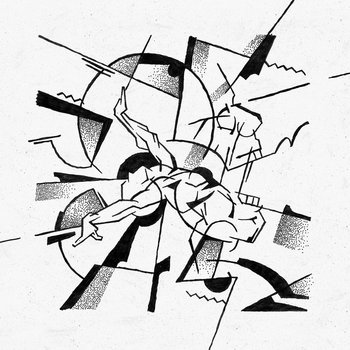
Perc (London-based producer Ali Wells) returns with Bitter Music, his third album following Wicker & Steel (2011) and The Power And The Glory (2014). As before, the album is released via his own Perc Trax imprint, giving Perc the complete creative control needed to realize his vision of what should be a milestone release for both himself and Perc Trax.
Originally a very inward looking album when work started on it in March 2016, the extensive political change happening in both the UK and around the world forced the album to widen its perspective. By the time the album was finished in December, it was clear that the sentiment of tracks such as "Look What Your Love Has Done To Me" was as equally applicable to the micro politics of person relationships as it was to concerns for the future of a country in a state of flux.
Sonically, the album takes in everything from strung-out vocal treatments to the type of warehouse rabble-rousers Perc has made his own since his very first releases. More dancefloor-focused than his previous albums, yet pulling from a wider range of sounds, Bitter Music shows a development and maturing of Wells' music that could not have been foreseen just a few years ago.
Delicately balancing the personal and the political, Bitter Music stands apart from most recent techno albums as it continually pushes outwards rather than concerning itself with the microscopic refinement of already established sounds. It is an album unafraid to take chances from an artist continually looking for his next step forwards.
More information can be found here.
Read More
- Administrator
- Albums and Singles

Arnold Dreyblatt has been called "the most rock 'n' roll of all the composers to emerge from New York's downtown scene in the 1970s." Dreyblatt founded the Orchestra Of Excited Strings in 1979, harnessing unusual tuning intervals to an exuberant performance style. Propellers In Love, the Orchestra's second album – originally released in 1986 on the Stasch imprint, in conjunction with the contemporary art space Künstlerhaus Bethanien – develops Dreyblatt's rhythmically exacting exploration of the glittering resonances and overtones generated by an ensemble of uniquely-altered stringed instruments and drums.
On Propellers In Love, simple song titles – "Odd & Even," "Harmonics," "Bowing" – belie intricate harmonic structures. Dreyblatt's modified instruments – a contrabass and miniature piano fitted with piano wire along with violin, all tuned in just intonation – undergo the Orchestra's rapid, staccato attacks. Sparkling timbres dance above interlocking rhythmic patterns moored by sparse yet propulsive percussion ("Pedal Tone Dance" and the title track). Throughout, the Orchestra's perpetual motion achieves a tremulous and exquisite density.
More information can be found here.
Read More
- Administrator
- Albums and Singles

For his second album, Two Solo Pieces, Jon Gibson forgoes the dense, multi-layered timbres of Visitations in favor of simple textures and tone. While Two Solo Pieces serves up further evidence of Gibson's centrality to American minimalism – witness its inclusion in Alan Licht's famed Minimal Top Ten list – this profoundly intimate record also reveals the beauty of enclosed spaces and infinite harmonic vistas.
As its unadorned title suggests, Two Solo Pieces consists of a pair of side-long tracks featuring the composer alone. While "Cycles," an iridescent improvisation on organ, achieves a downright eerie sense of expansiveness, Gibson's captivating alto flute on "Untitled" draws the listener inside the instrument itself.
The photo on the album's back cover – a seated Gibson surrounded by cascading rows of organ pipes and the vaulted ceiling in Manhattan's Peace Church – offers a striking visual complement to these gorgeous recordings.
More information can be found here.
Read More
- Creaig Dunton
- Albums and Singles
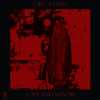
Brainwashed is proud to premiere "See Your Door", the first song from the new Circa Tapes album Love and Venom, due July 21st on Medical Records. Hear the song here, or in the most recent Brainwashed Podcast (Episode 351).
This is the third album by Adam Killing (the solo artist behind Circa Tapes), with previous releases on Ghostly International and DKA. "See Your Door" is the first song to be released from the album: a pensive, gloomy song of midtempo drum machine and analog synth pulse. The cold, robotic backing tracks contrast beautifully with haunting vocals and dour keyboard leads. It is the perfect teaser for the upcoming album, full of dark moods. The song is propelled by vintage synths and drum machines that nod toward a dance-tinged industrial past, but looks forward towards a distinctly modern and distinct future. Look for the full record, Love and Venom, coming July 21st, 2017 on Medical Records.
Read More
- Administrator
- Albums and Singles
 Since releasing two stellar albums in 2012, Aaron Dilloway has been comparatively quiet, contenting himself with a steady stream of cassettes, collaborations, and reissues.  Apparently, he also spent a bit of that time slowly assembling The Gag File, the long-awaited follow-up opus to Modern Jester.  Given that Dilloway has long been one of the most influential figures in the American noise scene, it is no surprise that The Gag File is a bizarre, aberrant, and fine album.  That said, some aspects were still deliciously wrong-headed enough to catch me off-guard (though the cover art should have been a fair warning).  At its best, The Gag File transcends mere noise entirely and ventures into realms that feel like a vivid kitschy nightmare or the infernal horror of an endless bad party.
Since releasing two stellar albums in 2012, Aaron Dilloway has been comparatively quiet, contenting himself with a steady stream of cassettes, collaborations, and reissues.  Apparently, he also spent a bit of that time slowly assembling The Gag File, the long-awaited follow-up opus to Modern Jester.  Given that Dilloway has long been one of the most influential figures in the American noise scene, it is no surprise that The Gag File is a bizarre, aberrant, and fine album.  That said, some aspects were still deliciously wrong-headed enough to catch me off-guard (though the cover art should have been a fair warning).  At its best, The Gag File transcends mere noise entirely and ventures into realms that feel like a vivid kitschy nightmare or the infernal horror of an endless bad party.
The opening "Ghost" presents a somewhat muted introduction to Dilloway's haunted funhouse, as it is initially little more than a soundscape built from industrial-sounding drones and flanging washes of synthesizer.  There is certainly some low-level dissonance and menace right from the jump, but the bottom does not drop out until its drugged and lurching groove blossoms into a brief interlude of garbled and distorted vocals, like someone struggling (and failing) to be heard from the spirit world.  The following piece, "Karaoke With Cal," is where the album first catches fire.  Again, Dilloway returns to voices, this time using a pitch-shifted tape that sounds like an incoherent and upset elderly man delivering a halting monologue over a broken, locked-groove waltz (of sorts).  There is also a whistling interlude (also of sorts) that sometimes sounds more like a space-y Theremin solo.  All of the individual components are certainly great, but the genius of the piece lies in what Dilloway does with his warped palette, weaving a thoroughly disorienting spell with layering, obsessive repetition, shifts in tape speed, and a distorting patina of hiss and crackle.
In a blackly funny bit of sequencing magic, "Cal" segues into the sounds of sirens and a screaming, fleeing crowd in "Inhuman Form Reflected."  After the initial hysteria, "Inhuman Form" settles into a rhythm that sounds like a room full of wheezing, buzzing antique machines…before unexpectedly erupting into an amusing final act of gibbering monster howls…followed by yet another final act that sounds like a man having a complete psychotic breakdown in an empty room.  Dilloway is quite a wizard at riding the line between black humor and catharsis, seeming to delight in freezing the smile on listeners' faces, a trait I find very endearing.  The album's first side then winds to a close with a simmering and rumbling loop pile-up ("Born in a Maze") that resembles an earthquake that gradually transforms into a distorted locked-groove snippet of a prog rock song.
The album's second half begins in sublimely creepy fashion with "It’s Not Alright," an obsessive and hallucinatory loop of soulful overlapping voices repeating the mantra of "It's Alright" over a simmering bed of hiss and a slowly swelling pulse that sounds like a macabre parade.  In yet another feat of sequencing brilliance, that piece seamlessly blurs into "No Eye Sockets (For Otto and Cindy)," which sounds like a gently tweaked field recording of a bunch of laughing office workers chatting inanely and enjoying happy hour as funky blues rock plays in the background. Near the end, the music seems to start again from the beginning and the laughter becomes a bit more sinister and echoing.  I definitely expected the existentialist hell to pointedly and mischievously continue for much longer, but Dilloway abruptly bulldozes the whole scene with the manic, blown-out Latin-dance-party-meets-industrial-machinery-and-an-erratic-tape-player confusion of "Switch."  Eventually that nerve-jangling cacophony grinds to a halt, but Dilloway replaces it with the similarly discordant "Shot Nerves," which drags the momentum down to a sickly crawl.  Initially, it is one of the weaker pieces on the album, as it just sounds like someone playing a meandering one-finger non-melody on a sizzling and overdriven synth in hopes of making the ugliest possible harmonies.  Heroically, however, Dilloway rouses himself for one final (if brief) fanfare of chopped, jabbering voices and annoying buzzes and the album ends on a solid note.
Willfully annoying bits aside, The Gag File is quite a wonderfully disorienting, bleakly amusing, and ambitiously experimental album.  In fact, it feels a lot like I am experiencing the final flickering impressions in the mind of a dying vaudeville comedian or birthday party magician in the thrall of acid psychosis.  Admittedly, not every song achieves such a transcendent illusion (in fact, only a handful do), but it is remarkable that any do at all.  Granted, Dilloway's former bandmates in Wolf Eyes share a similar passion for celebrating the sickly and the broken, but Dilloway is on much darker, stranger trip all his own.  In fact, I never get the feeling that Dilloway shares the same concerns as other noise/experimental musicians at all, nor that he is particularly interested in making cool sounds (though they sometimes happen anyway).  Rather, Dilloway seems like an artist that has ingeniously found a way to use ravaged tapes and cultural detritus as a means of burrowing deep into his subconconscious to exhume a rotting mound of buried dread and anxiety.  Certainly other artists have had similar ambitions over the years, but rarely are the fruits this undiluted by artifice.  More significantly, it is even rarer still for that horror to be transformed into the darkest and most perverse of comedies.
 
Read More

